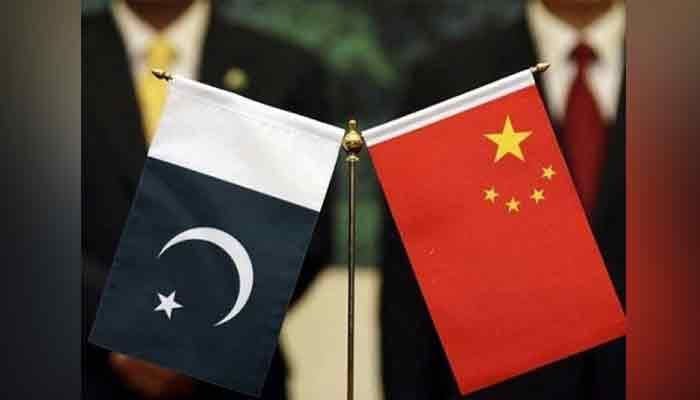China rolls over $2bn loan for a year
So far in totality, China has rolled over a $4.3 billion loan, including $2.3 billion in commercial loans
ISLAMABAD/KARACHI: China has rolled over $2 billion loan in safe deposits for cash-strapped Pakistan’s economy amid dwindling foreign exchange reserves, The News has learnt.
Earlier, Pakistan’s battered currency appeared robust as it closed at 229 against dollar compared with 240.50 on Tuesday, gaining Rs11.50. It was reported that some exchange companies were selling dollars as low as Rs218 in panic.
“China has rolled over three SAFE deposits. The first deposit of $500 million was due on June 27, 2022, the second $500 million matured on June 29, 2022 and the third $1 billion was due on July 23, 2022. China’s State Administration Foreign Exchange (SAFE) deposits of $2 billion have been rolled over for one year,” a top official of the Finance Division confirmed while talking to The News here on Wednesday.
So far in totality, China has rolled over a $4.3 billion loan, including $2.3 billion in commercial loans and now $2 billion in SAFE deposits, making it possible for Islamabad for bridging the external financing gap with a whopping amount of $35.9 billion for the current fiscal year.
The IMF has linked the possibility of holding a planned tentative Executive Board meeting by end of August 2022 once adequate financing assurances are confirmed.
However, Pakistani authorities have been awaiting for confirmation from friendly countries, especially from the Kingdom of Saudi Arabia (KSA), Qatar, and the UAE for bridging the financing gap of $4 billion identified by the IMF for materialising the gross external financing requirements of $35.9 billion for the current fiscal year.
Saudi Arabia might confirm jacking up the oil facility on deferred payments of $1.2 billion, making the total oil facility to the tune of $2.4 billion. Pakistan and the IMF are also discussing the possibility of one billion Special Drawing Rights (SDRs) for conversion into the US dollars for Islamabad. But this conversion of the SDRs facility might take some time because it was just an option for which the mechanism would have to be devised.
The UAE might show its interest in getting shares of state-owned enterprises (SOEs), especially in the oil and gas sector but it will take a few months for materialising such commercial transactions. The possibility of gas and RLNG on deferred payment from Qatar is likely to be materialised soon as discussions are underway on this subject. The selling out of RLNG power plants to one friendly country will also take some time but it could fetch $2-$3 billion into the national kitty.
All these developments have occurred at a time when the foreign exchange reserves have depleted at an accelerated pace. The foreign exchange reserves held by the State Bank of Pakistan stood at $20 billion in August 2021 but it nosedived to $8.5 billion on July 22, 2022. During the week ended on 22-Jul-2022, the SBP’s reserves decreased by $754 million to $8.5 billion due to external debt and other payments.
On the other hand, it appeared that Pak currency hadn’t given up the fight, posting its largest one-day gain ever on the back of higher inflows from exporters and decreased import payments, with hopes that the cash-strapped country was getting closer to securing a bailout from the International Monetary Fund boosting sentiment.
The rupee strengthened to its highest level in nearly two weeks. The local unit closed at 228.80 per dollar versus its previous close of 238.38. It rose by 9.6 rupees, a record highest recovery in absolute terms. The daily surge of 4.19 per cent was the best performance for the rupee since 1999.
The rupee slumped 14.4 percent in July, the biggest monthly fall since 1972. It has depreciated by 23 per cent this year, weighed down by shrinking foreign reserves and concerns over a delay in the IMF loan programme amid political turmoil in the country. The State Bank of Pakistan’s foreign exchange reserves fell to $8.6 billion as of July 22 from $9.8 billion in June 2022. The reserves are enough to pay for hardly six weeks of imports.
Analysts said the positive statement from the International Monetary Fund, the soft dollar demand from importers to make payments and high greenback selling interest by exporters in anticipation of further strength in the rupee’s value in the coming days helped shore up the troubled currency. “Confidence boosting comments from the IMF team have improved sentiment and significant sale of dollars by exporters,” said Komal Mansoor, the head of research at the Tresmark, a web-based terminal for financial markets.
The latest trade numbers reduced pressure on the rupee, improving the outlook for the country’s fragile current account balance. The country’s trade deficit fell 47 per cent month-on-month to $2.6 billion in July driven by a drop in imports. Total imports dropped to $4.9 billion in July 2022 from $7.9 billion in the previous month, the Pakistan Bureau of Statistics reported. The decline in imports was attributed to a ban on some items and lower petroleum imports.
The IMF resident representative in Islamabad, Esther Perez Ruiz, said Pakistan had completed prior actions for the combined seventh and eighth reviews of the Extended Fund Facility, following the increase in petroleum development levy on July 31. This signalled a resumption of the bailout, boosting investor confidence in stabilising the economy.
However, the IMF linked the holding of its Executive Board meeting, which has been planned for late August, with the confirmation that Saudi Arabia and the United Arab Emirates would give an expected $4 billion loan to the country after the IMF releases its tranche.
Analysts see a sustained rebound in the rupee in the days ahead. “The rupee is likely to continue its appreciating trend due to expected inflows from the IMF and the external assistance from friendly countries. The improvement in the current account deficit amid a decline in imports will help the rupee gain further in the coming days,” said Tahir Abbas, the head of research at the Arif Habib Limited. “We expect a smaller current account deficit of $300-400 million in July, compared with $2.2 billion in June,” Tahir added.
Meanwhile, the State Bank of Pakistan waged a crackdown on exchange firms and banks to arrest the rupee’s fall and ensure availability of the foreign currency in the market. “In view of recent volatility in the exchange rate and the difference between the interbank rate and the rate offered by Exchange Companies (ECs) and banks to their customers, the State Bank of Pakistan (SBP) has increased the monitoring of the foreign exchange operations of ECs and banks,” it said in a statement.
In this respect, the SBP started inspections of a number of Exchange Companies and banks since Monday (August 1, 2022). On Tuesday (August 2, 2022), the SBP suspended the operations of four branches of two ECs (Galaxy Exchange Co and Al-Hameed International Money Exchange Co) for violation of SBP regulations.
The SBP has also imposed monetary penalties on some ECs in the recent past. Besides, due to violations of SBP instructions, arrangements of 13 franchises have been terminated by six different ECs in the recent past.
“The SBP has also started conducting a mystery shopping exercise throughout Pakistan to investigate the apprehensions that some ECs are not selling foreign currency to their customers. A meeting of the Exchange Companies Association of Pakistan has also been called on August 4, 2022,” it said. “If needed, the SBP would augment its enforcement actions on the ECs and banks in light of findings of the ongoing inspections and mystery shopping.”
-
 Kidney Damage Is Now Reversible: Here's Where Science Stands
Kidney Damage Is Now Reversible: Here's Where Science Stands -
 Google Maps Begins Rolling Out Redesigned Settings Page
Google Maps Begins Rolling Out Redesigned Settings Page -
 Tropical Cyclone Koji: Thousands Of Australians Affected By Mass Power Outages In Queensland
Tropical Cyclone Koji: Thousands Of Australians Affected By Mass Power Outages In Queensland -
 How You Can Protect Yourself From Alzheimer's At The Comfort Of Your Home
How You Can Protect Yourself From Alzheimer's At The Comfort Of Your Home -
 Sydney Sweeney, Scooter Braun Romance Hits Trouble
Sydney Sweeney, Scooter Braun Romance Hits Trouble -
 Microsoft AI Chief Questions How Safe Current AI Really Is
Microsoft AI Chief Questions How Safe Current AI Really Is -
 Princess Diana's Secret Regret About Her Sons William And Harry Revealed
Princess Diana's Secret Regret About Her Sons William And Harry Revealed -
 Why Is Instagram Sending Password Reset Emails To Users? Here’s Everything To Know
Why Is Instagram Sending Password Reset Emails To Users? Here’s Everything To Know -
 Elon Musk To Introduce New Open-source Algorithm For ‘X’
Elon Musk To Introduce New Open-source Algorithm For ‘X’ -
 Jennifer Lawrence Faces Backlash For Rehoming Dog After Incident With Son
Jennifer Lawrence Faces Backlash For Rehoming Dog After Incident With Son -
 Prince William Gears Up For A Slap To The Face As Prince Harry Awaits Second Win
Prince William Gears Up For A Slap To The Face As Prince Harry Awaits Second Win -
 ‘High School Musical’ Alum Matt Prokop Arrested On Child Pornography Charges
‘High School Musical’ Alum Matt Prokop Arrested On Child Pornography Charges -
 Paris Hilton Gets Candid About Britney Spears' Wellbeing
Paris Hilton Gets Candid About Britney Spears' Wellbeing -
 Prince Harry’s Return To The UK With Archie, Lilibet: ‘Will Meghan Finally Pull The Trigger?’
Prince Harry’s Return To The UK With Archie, Lilibet: ‘Will Meghan Finally Pull The Trigger?’ -
 Naomi Watts Gets Real About Impact Of Menopause On Her Eyes
Naomi Watts Gets Real About Impact Of Menopause On Her Eyes -
 Fears Mount Against Prince Harry: ‘He’ll Record So That He Can Use Every Word’
Fears Mount Against Prince Harry: ‘He’ll Record So That He Can Use Every Word’




